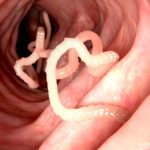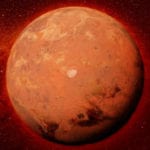 Technology
Technology  Technology
Technology  Humans
Humans 10 Everyday Human Behaviors That Are Actually Survival Instincts
 Animals
Animals 10 Animals That Humiliated and Harmed Historical Leaders
 History
History 10 Most Influential Protests in Modern History
 Creepy
Creepy 10 More Representations of Death from Myth, Legend, and Folktale
 Technology
Technology 10 Scientific Breakthroughs of 2025 That’ll Change Everything
 Our World
Our World 10 Ways Icelandic Culture Makes Other Countries Look Boring
 Misconceptions
Misconceptions 10 Common Misconceptions About the Victorian Era
 Mysteries
Mysteries 10 Strange Unexplained Mysteries of 2025
 Miscellaneous
Miscellaneous 10 of History’s Most Bell-Ringing Finishing Moves
 Technology
Technology Top 10 Everyday Tech Buzzwords That Hide a Darker Past
 Humans
Humans 10 Everyday Human Behaviors That Are Actually Survival Instincts
 Animals
Animals 10 Animals That Humiliated and Harmed Historical Leaders
Who's Behind Listverse?

Jamie Frater
Head Editor
Jamie founded Listverse due to an insatiable desire to share fascinating, obscure, and bizarre facts. He has been a guest speaker on numerous national radio and television stations and is a five time published author.
More About Us History
History 10 Most Influential Protests in Modern History
 Creepy
Creepy 10 More Representations of Death from Myth, Legend, and Folktale
 Technology
Technology 10 Scientific Breakthroughs of 2025 That’ll Change Everything
 Our World
Our World 10 Ways Icelandic Culture Makes Other Countries Look Boring
 Misconceptions
Misconceptions 10 Common Misconceptions About the Victorian Era
 Mysteries
Mysteries 10 Strange Unexplained Mysteries of 2025
 Miscellaneous
Miscellaneous 10 of History’s Most Bell-Ringing Finishing Moves
10 Surprising Ways Living on Mars Would Compare to Earth
Rapidly becoming more than just science fiction, the initiative to colonize Mars is one that many smart and powerful people are pushing. It’s not an idea everyone supports, and it’s also certainly not without its own challenges, leading many to be very skeptical at best.
The truth is, living on Mars would be very different from living on Earth. And yet, it could be shockingly similar too. The major differences you find may be surprising, especially in their details, and there would also be similarities that many of us wouldn’t expect at all.
Is the red planet surprisingly not as inhabitable as it seems? Or will something small and unexpected make our efforts impossible?
Related: Top 10 Deadliest Planets In The Universe
10 Different Atmosphere
The part that shouldn’t be surprising to most of us is that oxygen wouldn’t be so simple to come by on Mars. We take the ability to breathe the air on our planet for granted, unsurprisingly so, considering we’ve evolved to do just that.
A possibly more surprising fact, however, is that Mars does indeed have an actual atmosphere. Thinner, significantly thinner by about a hundred times, and also far less hospitable when compared to Earth’s, but one that exists nonetheless.
Comprised of over 95% carbon dioxide, we couldn’t naturally breathe. Even so, Mars’s atmosphere does actually contain oxygen, a whopping 0.13%. Not a lot, but nonetheless fascinating compared to the void of outer space. As well as that, if we could convert that huge amount of carbon dioxide into oxygen using, say, plants, well, things might start looking a lot less hopeless.[1]
9 Similar Yet Different Timescales
A day on Earth is 24 hours. A very basic fact, but one that also shapes our lives significantly. Humans, and really, all animals, are used to this evenly spaced cycle of day and night. Our sleep schedules are made to fit it, and our cultures are built on it.
Surely Mars would differ significantly from the length of day we’re so used to, right? Turns out, surprisingly, only by a little bit. Days on Mars last for approximately 24 hours and 40 minutes. A mere 40 minutes longer than what we have. Different enough to notice, perhaps, but not so different that it’d be a major disturbance.
The one major thing that would be very different is how long a year lasts. Since Mars isn’t as close to the sun as we are, a Martian year lasts 687 days, nearly doubling our mere 365. Similar day lengths but seasons that are twice as long.[2]
8 Horrific Radiation
An atmosphere that exists—thin as it is—a potential for oxygen, and fairly usual days with the slight downside of long seasons, Mars may even begin to sound easy to adjust to, a place we will inevitably colonize. That is, until the first major issue: ionizing radiation.
Mars, unlike Earth, has no magnetosphere to protect it from radiation. This wasn’t always the case; up until around 4.2 billion years ago, it had one just like our planet does now. For some reason that scientists still debate, this magnetosphere disappeared, which is actually the cause of the atmosphere being so thin, as well as the reason we’d have a hard time settling on the red planet.
Lacking protection from radiation, as well as terrifying solar flares and cosmic rays, the amount of radiation can go up to around 2,000 millirads per day—far, far higher than the 22 millirads astronauts experience on the International Space Station. Prolonged exposure could lead to radiation poisoning as well as very high rates of cancer, meaning this difference is one we must deal with if we want to live on Mars.[3]
7 Smaller Surface, Just as Much Land
Mars is quite significantly smaller than Earth, leading to potential worries about not having enough space for large colonies. This only becomes more worrying if the plan eventually turned to humanity as a whole needing to move or if the Mars population got as large as ours here.
Mars, however, aside from being smaller, is also a desert planet. Something that Earth is anything but. As it turns out, since most of our planet is covered with oceans, the amount of land comes out to be around the same.
Of course, some water would need to be placed using terraforming. Still, our massive oceans, containing salt water, aren’t exactly useful to us now, anyway. While we have many, many things to worry about, being too cramped probably isn’t one of them.[4]
6 Native Life?
Mars, as we know it, lacks life and always has. A few conspiracy theories and dated ideas about Martians don’t do much to subvert this, either. If you asked the average person, they’d most likely respond that our solar system lacks life altogether, aside from Earth, of course.
Scientists, shockingly, aren’t so sure. The answer is still uncertain, though, and it also very much depends on what we mean by “life” exactly. Mars does not have anything similar to animals or plants, and that’s something we’re quite certain about. The planet was likely more hospitable in the past. Still, even then, there’s no proof of any sci-fi-esque creatures inhabiting the sandy surface.
What Mars might have are microorganisms such as bacteria. Scientists discovered clear signs of methane on the planet, a gas that could be produced by primitive life, though other groups found no such thing. Samples have been collected to further investigate the situation, but likely won’t be analyzed for another decade or so.
How does this affect us and our potential colonies, though? Simply put, if potentially harmful space bacteria are a thing, we really ought to know before coming in contact with it.[5]
5 Varying Temperatures
Mars, being farther from the sun, is cold. Once again, that fact isn’t so surprising. It’s also made even colder than it would be by the very thin atmosphere that’s not so good at conducting heat. Still, not exactly a shocker. The fact we may fail to consider, though, is that Mars, being a desert planet, actually mimics deserts on Earth in some key ways.
Temperatures vary wildly on the surface, it is indeed very cold throughout much of the year, and especially at night, temperatures could go far, far below zero degrees. The mean temperature, in fact, is -85°F or -65°C.
And yet, during summer and near the equator, temperatures can reach a comfortable 68°F or 20°C. More than liveable and able to sustain liquid water, much higher than one would expect. If we could somehow create an atmosphere, well, just imagine how much more liveable it could still get.[6]
4 Lower Gravity Makes Life Harder
The gravity is lower on Mars, only 38% of what it is on Earth, meaning you’d effectively weigh only 38% of your current weight (so, where do I sign up to travel there?). Living in low gravity might seem fun at first glance, but it starts to seem more and more difficult, even considering things such as heavy winds. And it only gets more troubling when you examine its effect on our bodies and, even surprisingly, obstacles it might present.
The human body evolved to endure Earth’s gravitational force. Our bones, muscles, heart, and veins. After just eight days during the Apollo space flights, astronauts were so weak and lost so much muscle and bone that they had to be pulled out of their landing capsules. Lower gravity also makes it harder for our cardiovascular system to function properly, increasing the risk of heart attacks later in life.
Additionally, it may even make giving birth difficult or impossible, given the fact that it’s, once again, a mechanism that evolved to fit Earth’s gravity. The bottom line, though, is we don’t know. Gravity on Mars might just be strong enough to circumvent these problems. Or it might not. A scary unknown, and one we’ll have to find out about.[7]
3 Frozen, Salty Water
The good news is that Mars has had water and likely still has water on its surface right now. The bad news, however, it’s both frozen solid and very salty. Much like our oceans, salty water isn’t anywhere near as useful as, say, a river or lake full of water you can just drink. Yet, on a different planet that’s not exactly the most hospitable to life, it may just be a lifesaver.
There’s an ever-increasing amount of evidence that Mars once had liquid, salty water flowing near its equator as recently as 400,000 years ago. That may sound like a long time, but it becomes much shorter on a cosmic timescale, as well as considering the fact that our planet was already teeming with life by then.
Currently, if Mars still has water—and scientists definitely seem to think so—it’s likely near the poles, still salty and frozen solid. Overall, this is still great news. One thing’s certain, ice that you can melt and extract the salt from is much, much better for us than no water at all.[8]
2 Plants Could Still Grow
Growing plants on Mars is a challenge, and it’s also one that’s essential for our long-term survival there. But it turns out, though, it may not be as hard as it first seems. There are many obstacles to overcome, definitely, but what might surprise you is that current tests and research are looking surprisingly good. In fact, the first plant we’d grow has already been selected.
Alfalfa, a plant that grows on our planet right now, is apparently able to grow in volcanic soil very, very similar to the soil on Mars. This plant is not edible, but it could be the key to producing sustainable fertilizer that would allow other plants to grow, as well as turning carbon dioxide into oxygen.
We’d need water, and we’d need to deal with radiation and other conditions, but simulated tests have already been successful in growing plants here on Earth in Mars-like conditions. There are challenges ahead, but this whole thing may just be quite possible.[9]
1 The Differences Could Be Overcome
The most important point really is, perhaps, the fact that living on Mars may be more realistic than we realize. How it compares to Earth isn’t always favorable, but differences can be overcome, and our amazing scientists are getting ever closer to turning that into a reality.
NASA’s Perseverance rover produced oxygen on Mars all by itself. It was costly, taking a lot of energy to do so, but a successful first attempt that will only get better, leading scientists to say that water could be next. There are plans to terraform the red planet, quite possibly making it Earth-like and liveable. And even horrific obstacles such as the massive amount of radiation are finding solutions such as suggested “hobbit hole” type structures that colonists could hide in.
Human ingenuity is incredible, and our ability to find solutions and survive is unmatched on our own planet. Whether you think Mars should be colonized or not, the question isn’t whether it’s possible. If the planet compares poorly, advancements will make it so it doesn’t.[10]








